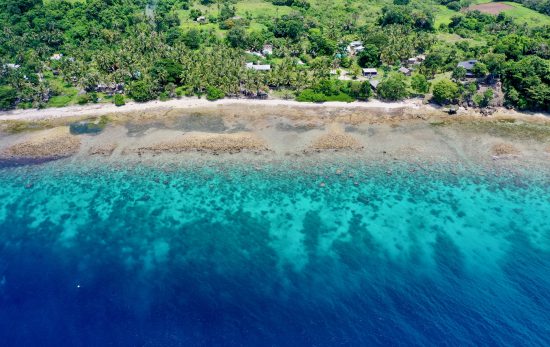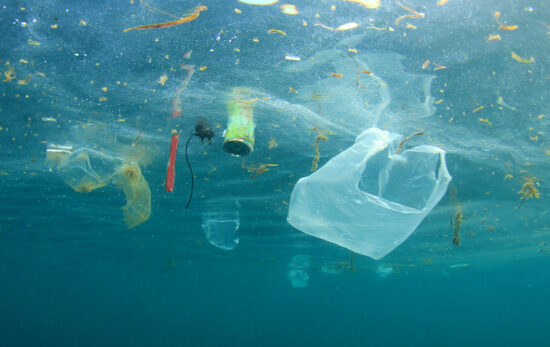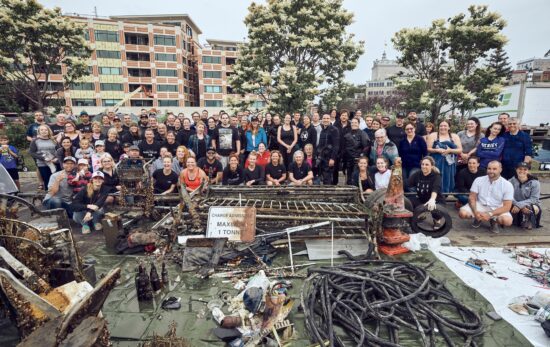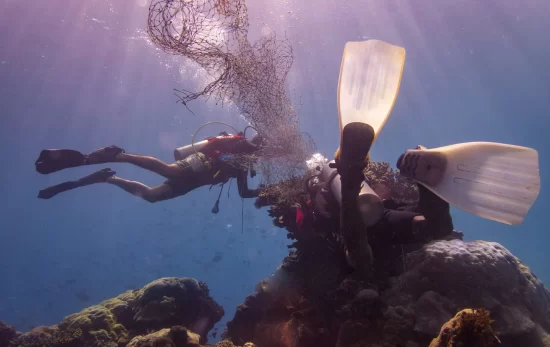March is Seagrass Awareness Month and a great opportunity to highlight the important role of seagrass on the planet, and what we as divers and Ocean Torchbearers can do to protect it.
Seagrass is a grass-like plant that lives in shallow waters in every continent except Antarctica. Up to 35x more effective than the same area of Amazonian Rainforest at storing carbon and covering only 0.1% of the ocean floor, seagrass is responsible for 10-15% of the carbon stored in the global ocean. What’s more, these ecosystems help to provide the foundations of all life by;
- Creating Diversity: A single acre of seagrass may support as many as 40,000 fish, and 50 million small invertebrates like crabs, oysters, and mussels, and;
- Supporting Humanity: Seagrass meadows supply 50% of the world’s fisheries, providing vital nutrition for close to 3 billion people.
Unfortunately, these powerful ecosystems are being lost at a rate of one soccer field every 20 minutes. Luckily, seagrass is also one of the most resilient plants on the planet and will be able to bounce back rapidly with enough support. As divers and Ocean Torchbearers, we can help protect these ecosystems. Here’s how:
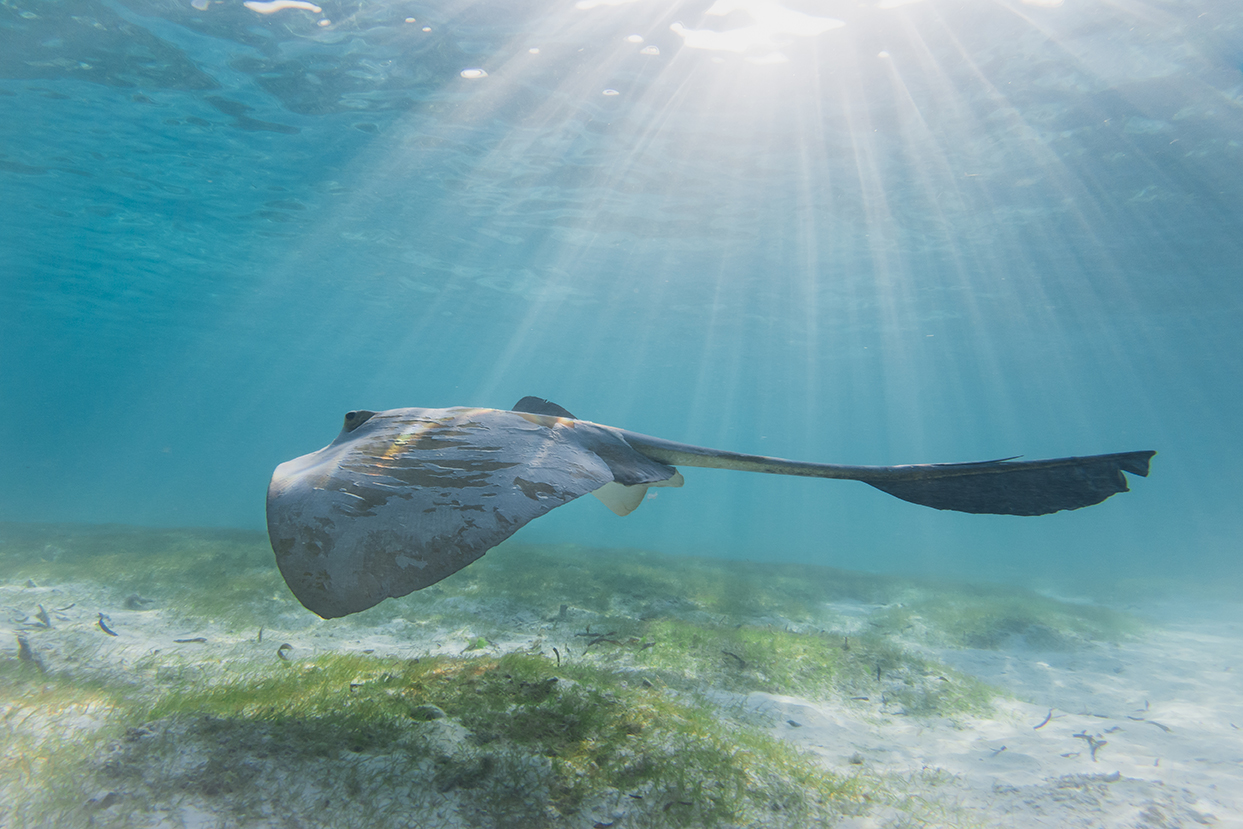
1. Support Sustainable Dive Resorts
A major threat to seagrass ecosystems is unsustainable coastal development. Many seagrass ecosystems are found along beautiful tropical coastlines nearby to coral reefs, and these make the perfect environment for a paradise beach resort. Unfortunately, development that does not keep the natural environment in mind can lead to destruction of seagrass meadows to make way for “pristine” white sandy shallows that make the “picture perfect postcard”. The reality is, resorts that have purposefully removed the seagrass from their beach shallows, will likely feel the effect on their coral reefs with less biodiversity and resilience to damage from storms.
To support ocean health and give yourself a better chance of marine life sightings right from your sun lounger, look out for resorts that take a sustainable approach to hospitality. If in doubt, check out PADI Travel’s Eco Travel Collection, look for information on your chosen resort’s website, or simply ask them! If they are truly committed to supporting the environment, they will be excited to discuss their values and achievements with you.
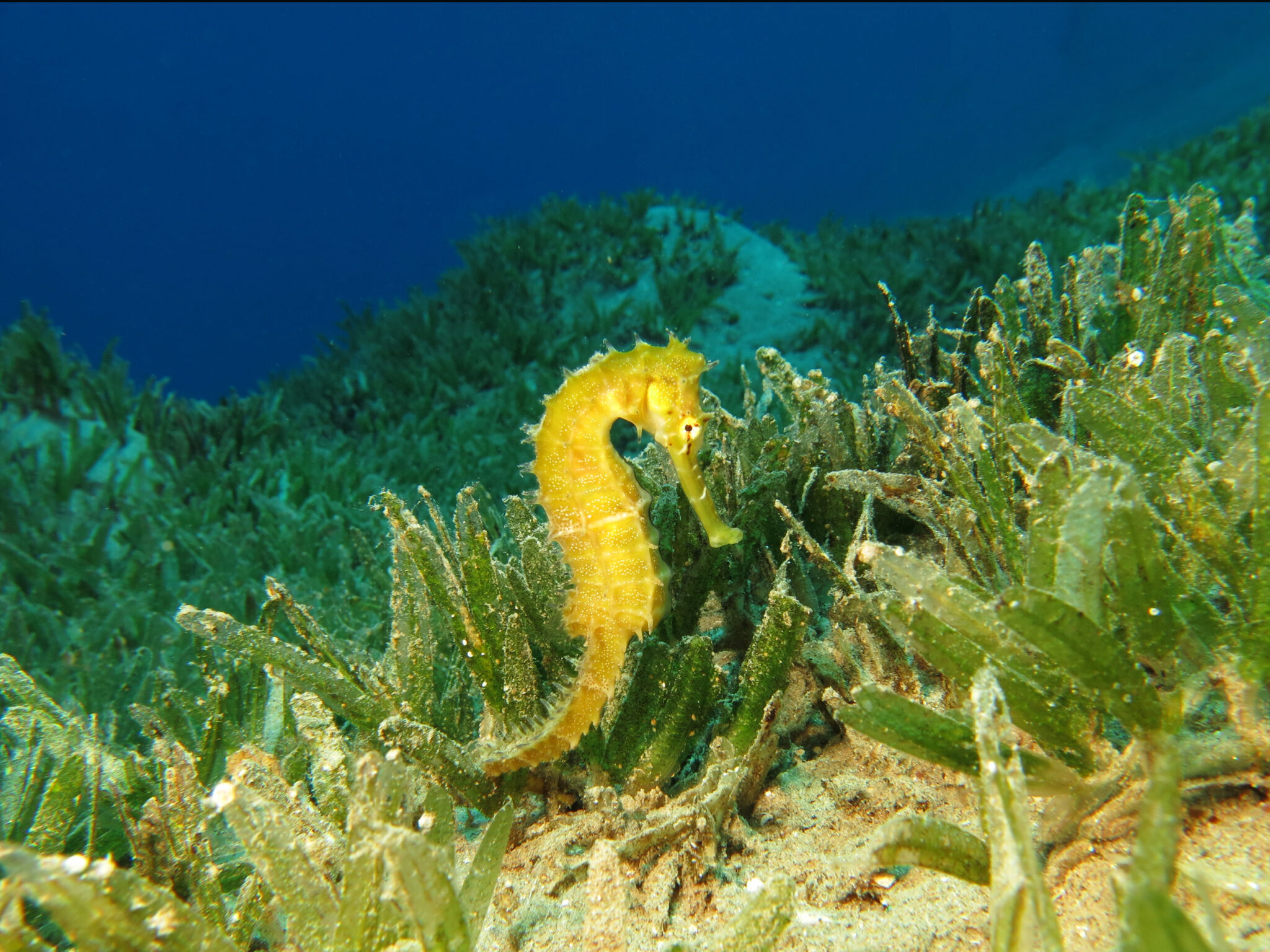
2. Donate to PADI AWARE Foundation
PADI AWARE’s Community Grant Program supports PADI Dive Centers and small NGOs around the planet that are taking action to protect and conserve seagrass habitats. One example is Kosamare in Greece, who’s project seeks to monitor and restore seagrass and install permanent eco-moorings in high-density areas across Kefalonia, Greece.
There are three phases to the project, which will take place between 2022-2025 in four different bays off Kefalonia. First, Kosamare will scientifically monitor seagrass meadows in the north of Kefalonia through aerial photography and underwater surveys in order to select priority areas for permanent eco-moorings and restoration work. Divers will measure fish biodiversity and the overall health of Posidonia meadows. Eventually, permanent, eco-friendly moorings will help prevent future damage from boating, and Posidonia restoration will revive some of these critical habitats and blue carbon sinks.
To support the PADI AWARE Grant Program, which has now raised over $200,000 for over 50 projects like KOSAMARE’s that tackle the ocean’s greatest challenges, consider donating here.
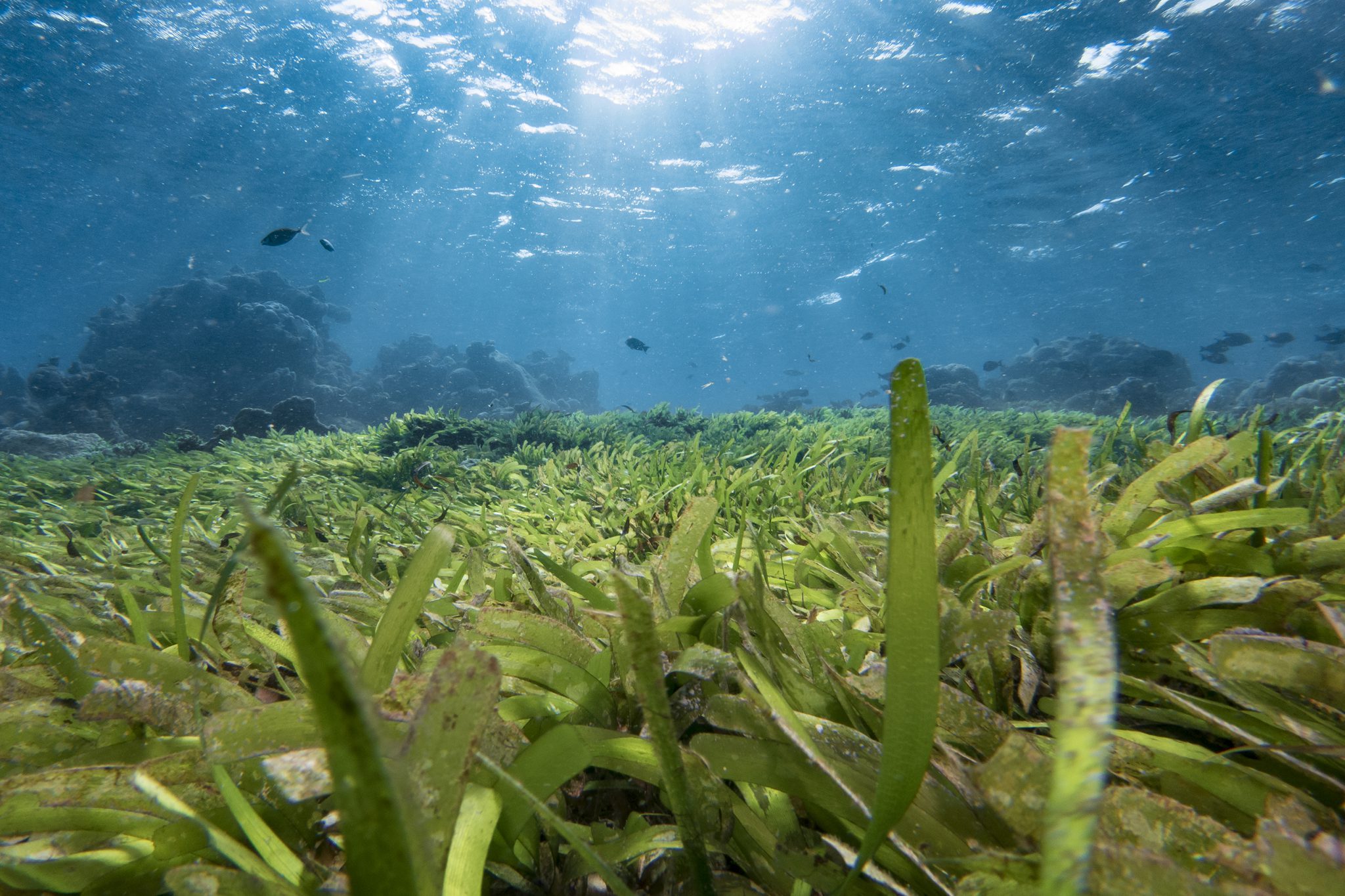
3. Dive with Green Fins Members
Since 2018, PADI has worked in partnership with The Reef-World Foundation to realize the potential of the diving community as an example of how a global industry can successfully support people, planet and profit. Our shared vision is to make sustainable diving and snorkeling the social norm, thereby improving the health of ocean habitats across the global ocean.
One area of support that Green Fins Members receive is in environmental best practice for boat moorings. As a boater it is important to be aware of where you are dropping anchor, and making the most of sustainable mooring options wherever they are available. By choosing to dive with Green Fins Members wherever possible, you are supporting dive centers that are committed to increasing the sustainability of their operations.
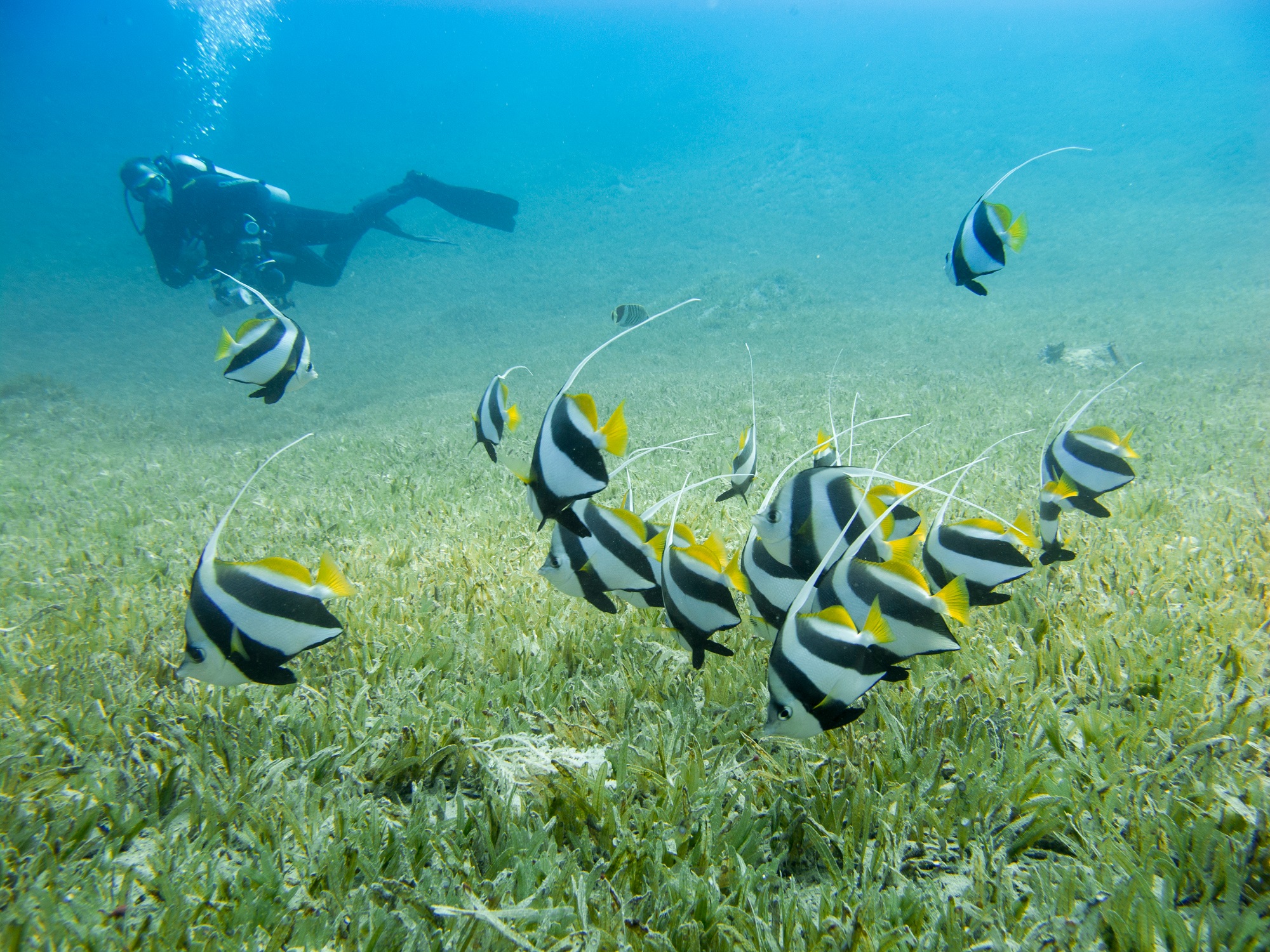
4. Explore Seagrass Ecosystems
PADI AWARE’s Adopt the Blue network is a world’s largest network of underwater sites for conservation action. PADI’s global network of 6,600 dive centers and resorts and more than 128,000 professional members worldwide provide unprecedented scale and unmatched potential for divers like you to take direct action that can drive measurable conservation impact.
As of January 2023, 16% of the 880+ global network of dive sites identified contain seagrass. For your next dive adventure, whether it be abroad or locally, why not reach out to one of the 150+ dive centers, resorts and professionals listed on the PADI AWARE Foundation’s Conservation Impact Map and go for a dive at their seagrass dive site. To learn more about the ecosystem, consider also taking the PADI Fish ID Specialty. From turtles to dugongs, stingrays and seahorses, it’s amazing what you can find in the seagrass.
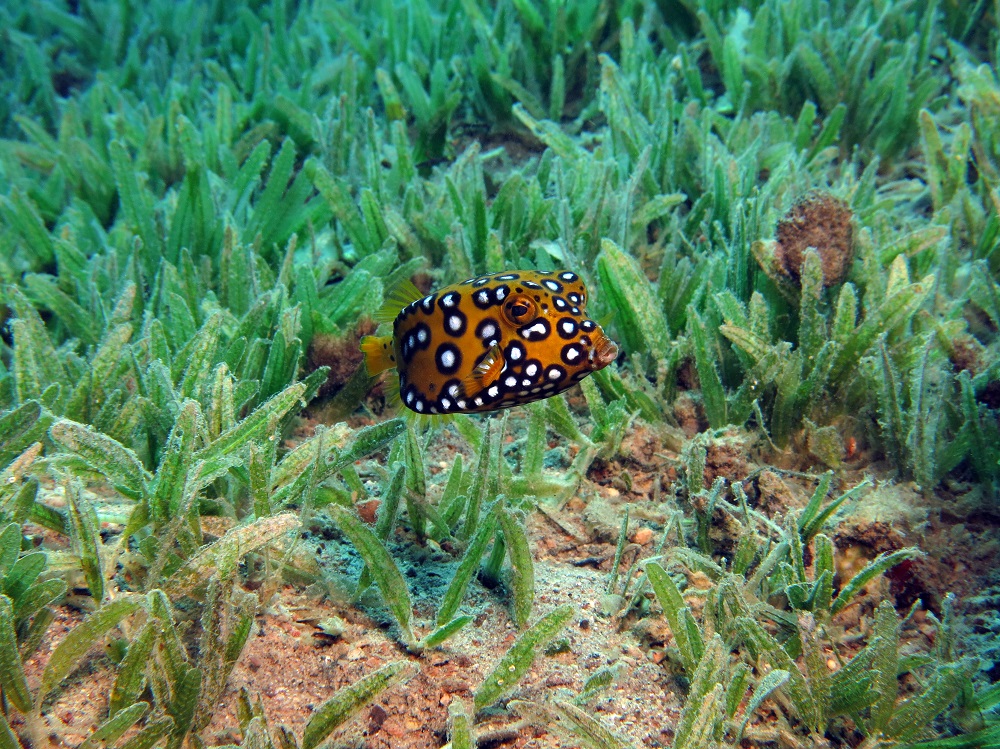
5. Always Keep Seagrass In Mind
One threat to seagrass habitats is pollution reaching the ocean originating from land activities. Keep seagrass habitats in mind and choose organic produce where possible, and if you live near the coast or along a river, be careful when applying any fertilizers or pesticides to your lawn, or consider using a slow-release fertilizer. Gutters and storm drains transport excess lawn chemicals to the water, and this can affect the health of seagrass meadows.

